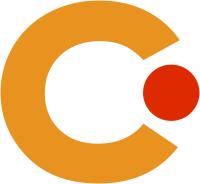Abstract
Several approaches have been developed and utilized in the field of Realtime Interactive Systems (RIS) in the past two decades. Virtual, Augmented, Virtualized, in general Mixed Realities, as well as realâ€time simulations and computer games led to manifold inspiring solutions for RIS developments in research and production. However, it is an ongoing challenge to identify and separate both novel results and well known solutions in any new system. The goal of this workshop is to analyze and structure the current state of the art in RIS software engineering and architectures. We want to identify common as well as novel paradigms, concepts, methods, and techniques that support technical de†velopments required in this field. A unified presentation of systems will allow us to sup†port research and development in a more efficient way, and will provide a valuable source of information for future developments. This workshop is our first integrated attempt to address the complex issue of RIS development and to summarize the work our community is doing.
SEARIS provides a forum for researchers and practitioners working on the design, de†velopment, and support of Realtime Interactive Systems which span from VR, AR, and MR environments to novel Humanâ€Computerâ€Interaction systems and entertainment applications. After a successful initial SEARIS workshop in 2008, this first followâ€up proceeds to establish a sustainable community shaping a common understanding, deriv†ing common paradigms, developing useful and necessary methods and techniques, and fostering new ideas. This year\u0027s workshop at IEEE VR 2009 has built on our previous experiences at SEARIS 2008 and fostered an interactive, discussionâ€like exchange format as opposed to rather traditional paper presentations. We have been delighted to be again part of the program of IEEE VR 2009 in Lafayette, Louisiana. The proceedings contain 11 accepted contributions, which add on to the ideas and discussions the community has collected during the first SEARIS Workshop in 2008 and are also available online at http://www.searis.net/. Various hot topics have been identified from the current scientific discussion and have been presented and discussed in different panels. The contributions could be grouped according to several aspects. In fact, it is one of the workshop\u0027s goals to identify such key aspects and many authors are shedding light onto several key issues.
We grouped the papers into 4 main sections: †Specific System Architectures †Modeling and Abstraction †Subsystems of RIS †Methodology and Patterns The target audience for the SEARIS workshop series and its publications are researchers and developers from VR/AR as well as from technically close fields like ambi†ent/pervasive computing and †of course †the computer games community. We would like to thank all people who made this workshop a reality. First, to the work†shop chairs at IEEE VR for their support and willingness to accept our proposal. Next, to all people who submitted papers to this track, either accepted or not. They are the heart and soul of this workshop and the starting point to the discussion we would like to fos†ter. Finally, to the attendees of the workshop, for their active interest in this proposal.
Marc Erich Latoschik (Universität Bayreuth, Germany) Dirk Reiners (University of Louisiana, Lafayette, USA) Roland Blach (CC Virtual Environments Fraunhofer IAO Stuttgart, Germany) Pablo Figueroa (Universidad de los Andes Bogota, Colombia) Raimund Dachselt (Otto von Guericke Universität Magdeburg, Germany)
